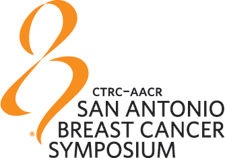By Karuna Jaggar, Executive Director
 Many women going through breast cancer treatment want to avoid radiation therapy because of a range of harms, including skin changes, vascular damage, and fibrosis, as well as concern about DNA damage. And because lumpectomy plus radiation is widely accepted to be as effective as mastectomy alone, some women who want to avoid radiation choose a mastectomy to treat breast cancer that could be treated with lumpectomy.
Many women going through breast cancer treatment want to avoid radiation therapy because of a range of harms, including skin changes, vascular damage, and fibrosis, as well as concern about DNA damage. And because lumpectomy plus radiation is widely accepted to be as effective as mastectomy alone, some women who want to avoid radiation choose a mastectomy to treat breast cancer that could be treated with lumpectomy.
Although many patients who have a mastectomy can avoid radiation therapy there are some patients, including those with more advanced nodal disease and 1-3 nodes involved, for whom post-mastectomy radiotherapy reduces the risk of recurrence. Because of the tissue damage from radiation, these women may have more problems with reconstruction surgeries.
On Thursday morning, Dr. Jagsi presented on the “Impact of radiotherapy on complications and patient-reported satisfaction with breast reconstruction: Findings from the prospective multicenter MROC study” [S3-07].
 In a multisite study, researchers compared the experiences of women who received radiation therapy (553 women) and those who did not (1461 women) before undergoing breast reconstruction after mastectomy. The median age of the patients was 49, which is younger than the average age of women with breast cancer. In total, just over half (53%) of all women who did not receive radiotherapy had bilateral reconstruction compared to less than half (46%) of women who had radiation therapy.
In a multisite study, researchers compared the experiences of women who received radiation therapy (553 women) and those who did not (1461 women) before undergoing breast reconstruction after mastectomy. The median age of the patients was 49, which is younger than the average age of women with breast cancer. In total, just over half (53%) of all women who did not receive radiotherapy had bilateral reconstruction compared to less than half (46%) of women who had radiation therapy.
There are a range of different kinds of reconstruction, which can be separated into two broad categories; implants and autologous reconstruction. Implants can be filled with saline or silicone, and are inserted under the pectoral muscle (which is stretched to accommodate the inflated implant) to reconstruct the shape of the patient’s breast. Autologous reconstruction, on the other hand, uses the patient’s own tissue—skin, fat, and sometimes muscle—which is moved to the chest to reconstruct the shape of the patient’s breast.
In this study, women who had radiation as part of their treatment were more likely to undergo autologous reconstruction; 38% compared to 25% of non-radiated patients. Radiated patients were also less likely to have immediate reconstruction; 83% compared to 96% of non-radiated patients.
Rates of complications are high with breast reconstruction. In addition to the risks of any surgery, some of the most common complications with breast reconstruction include infection, seroma, hematoma, implant rupture/leak, and extrusion, which is when the implant breaks through the skin. Within the first year, 26% of non-radiated patients and 29% of radiated patients experienced at least one complication. Within two years, those rates of complication rose: approximately a quarter (23%) of non-radiated patients and a third (34%) of radiated patients experienced at least one complication in the first two years after reconstruction.
Patients who had implants were more than 2 ½ times more likely to experience complications than those with autologous reconstruction. And within the first two years, 11% of radiated patients with implants experienced reconstructive failure, compared with 3% of non-radiated patients. Radiation therapy compromises the outcomes of implant reconstruction but not of autologous reconstruction.
Dr. Jagsi suggested that autologous reconstruction is preferable and presented data showing greater patient satisfaction in addition to lower rates of complications after radiation. However, autologous reconstruction is a big surgery, with significant physical impact in both the short and long term.
One interesting question was raised from the audience about the size of reconstruction and if the stress to the skin from larger implant size is associated with higher complications. Dr. Jagsi suggested she may go back retrospectively and look at the volume of expansion to assess this question.
Any woman undergoing mastectomy and radiation who is interested in reconstruction should have the opportunity to review all her options. In addition to access to data such as this, it may be helpful to talk to other women who have had the surgeries she is considering. Often the surgeon can provide contact information for other patients who are willing to share their experience, with the understanding that each woman’s experience is different.